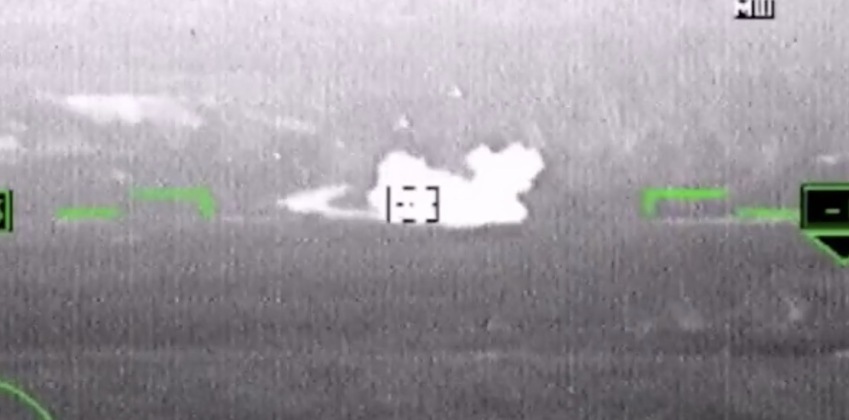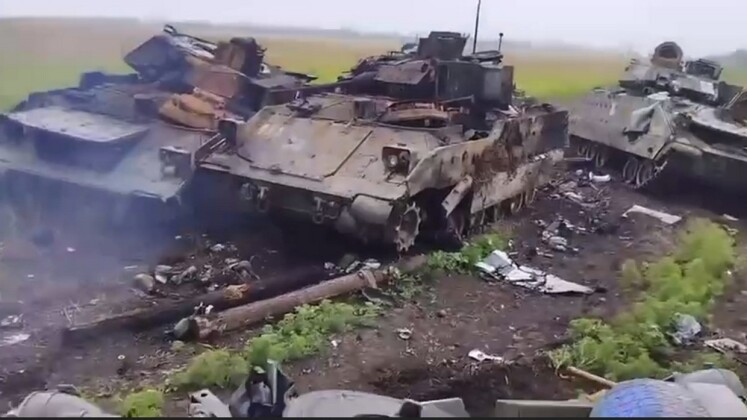News
Ukraine Intensifies Offensives Against Russian Positions: British SAS Playing Central Role in Thrust Towards Crimea
The Ukrainian Military and supporting paramilitaries have escalated offensives against Russian positions in Eastern Ukraine, according to reports from both Russian and Western sources. The Washington-based Institute of Study of War reported on July 26 the beginning of “a significant mechanised counteroffensive operation” in the west of the Zaporizhzhia region, with the New York Times reporting that this was “the main thrust” of the offensive and included “thousands of troops held in reserve, many of them Western-trained and equipped.” Russian President Vladimir Putin himself highlighted that “hostilities have intensified significantly.” “All attempts at counter-offensive have been rebuffed, and the enemy sustained great losses and was repelled,” the president stated, reporting that Ukraine has suffered losses of 26 tanks and 13 other armoured vehicles and over 200 casualties. “The enemy was not successful in any of the directions of firefight,” he added. There has been some speculation that renewed offensives were intended in part to cast a shadow over Russia’s Africa Summit in St Petersburg, the results of which have been viewed with much apprehension in the Western world as states across the continent, with the exception of Morocco, have been generally supportive of Moscow in its standoff with NATO.

Fighting has been particularly centred along the frontier in the 1000km Zaporizhzhia region in Eastern Ukraine, where any major breakthrough has the potential to allow Ukrainian forces to press towards the Crimean Peninsula. Crimea has been a target for intensified Ukrainian attacks in recent weeks and which has long been a target of significant symbolic value for both Kiev and its Western supporters. Ukraine’s lack of air power, and the serious limitations of its now much depleted air defences, however, have been widely highlighted by analysts on both sides as a major factor undermining potential efforts to gain ground on the frontlines. Speaking to Russian state media, retired Russian Army colonel Anatoly Matviychuk reported to this effect regarding the new offensive that a serious impediment was “the complete absence of the Ukrainian Air Force’s presence in the air, with the Russian Air Force controlling the enemy throughout the entire depth of its operational area. I think that this ‘offensive’ may have some temporary tactical successes … but I do not foresee any changes at the frontline. And everything will most likely end the way Ukraine’s ‘first’ advance wrapped up.” “Most importantly, our aviation has practically shifted to systematic combat actions in the entire Russian special military operation zone … That is, we are currently conducting a so-called active defence to weaken the enemy by launching attacks,” he added.

Regarding the presence of Western advisors and combatants, specifically from the United Kingdom, Colonel Matviychuk elaborated regarding the new offensives: “The most interesting thing is that there are many English-speaking military personnel in the UAF being spotted in this area, including advisers, instructors, and even the UK army’s ‘Special Air Service’.” He thus referred to the new offensive as “the fruit of creativity of the U.S. and the UK’s joint headquarters.” Russian government sources alleged starting shortly after the escalation of hostilities in Ukraine in February 2022 that British combat troops had been deployed near the frontlines, with this initially widely ridiculed by Western sources before being confirmed by the head of the British Royal Marines in December. The Marines were deployed for high risk operations near the frontlines from April 2022. Combatants from across the Western world have played major roles in the Ukrainian war effort, including ideologically motivated volunteers such as the Georgian Legion and the Polish Volunteer Corps, private military contractors from security firms particularly in Poland, and active service members in Western militaries such as the Royal Marines and the Special Air Service.












